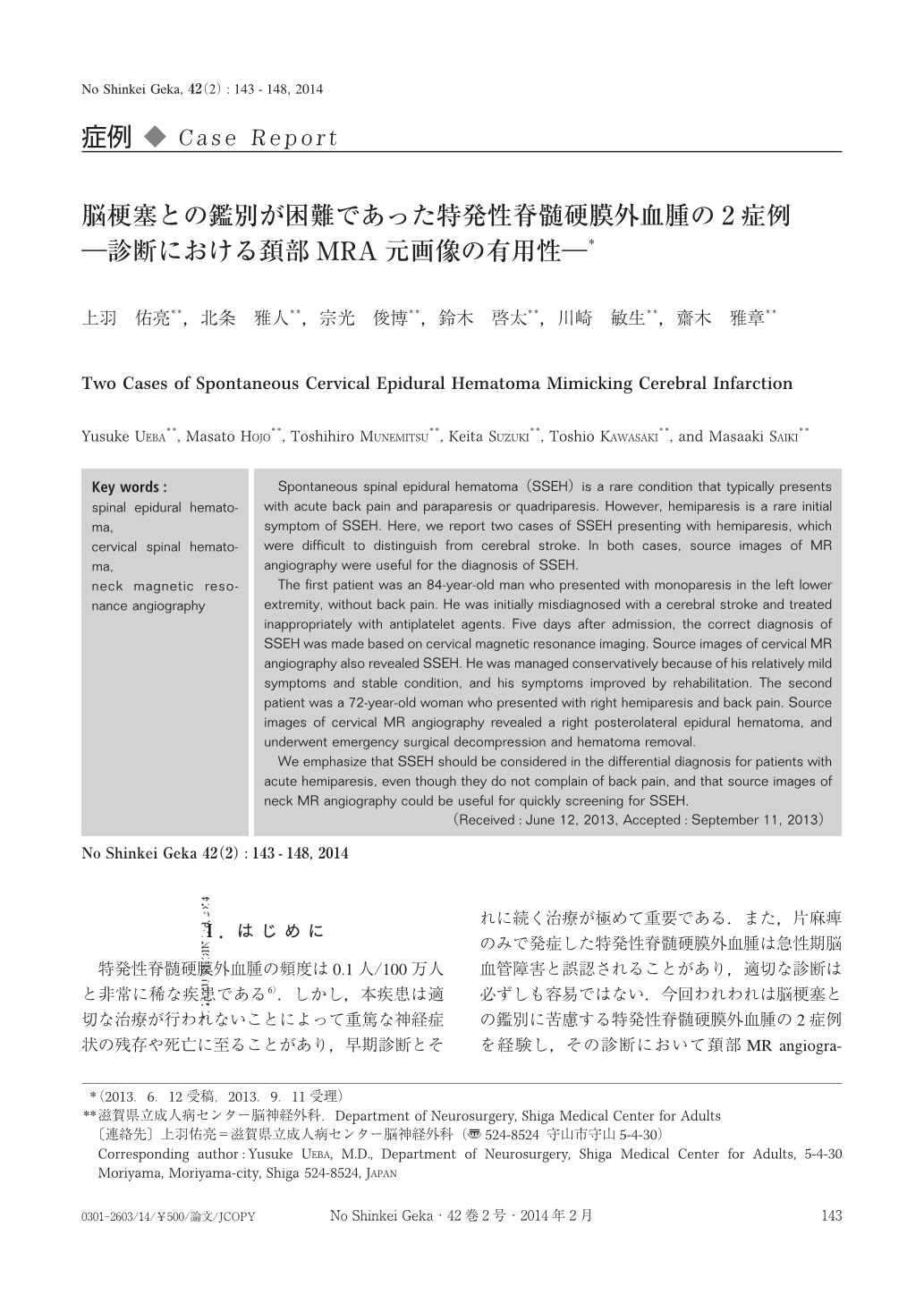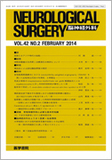Japanese
English
- 有料閲覧
- Abstract 文献概要
- 1ページ目 Look Inside
- 参考文献 Reference
Ⅰ.はじめに
特発性脊髄硬膜外血腫の頻度は0.1人/100万人と非常に稀な疾患である6).しかし,本疾患は適切な治療が行われないことによって重篤な神経症状の残存や死亡に至ることがあり,早期診断とそれに続く治療が極めて重要である.また,片麻痺のみで発症した特発性脊髄硬膜外血腫は急性期脳血管障害と誤認されることがあり,適切な診断は必ずしも容易ではない.今回われわれは脳梗塞との鑑別に苦慮する特発性脊髄硬膜外血腫の2症例を経験し,その診断において頚部MR angiography(MRA)元画像が有用であったため,文献的考察を加えて報告する.
Spontaneous spinal epidural hematoma(SSEH)is a rare condition that typically presents with acute back pain and paraparesis or quadriparesis. However, hemiparesis is a rare initial symptom of SSEH. Here, we report two cases of SSEH presenting with hemiparesis, which were difficult to distinguish from cerebral stroke. In both cases, source images of MR angiography were useful for the diagnosis of SSEH.
The first patient was an 84-year-old man who presented with monoparesis in the left lower extremity, without back pain. He was initially misdiagnosed with a cerebral stroke and treated inappropriately with antiplatelet agents. Five days after admission, the correct diagnosis of SSEH was made based on cervical magnetic resonance imaging. Source images of cervical MR angiography also revealed SSEH. He was managed conservatively because of his relatively mild symptoms and stable condition, and his symptoms improved by rehabilitation. The second patient was a 72-year-old woman who presented with right hemiparesis and back pain. Source images of cervical MR angiography revealed a right posterolateral epidural hematoma, and underwent emergency surgical decompression and hematoma removal.
We emphasize that SSEH should be considered in the differential diagnosis for patients with acute hemiparesis, even though they do not complain of back pain, and that source images of neck MR angiography could be useful for quickly screening for SSEH.

Copyright © 2014, Igaku-Shoin Ltd. All rights reserved.


